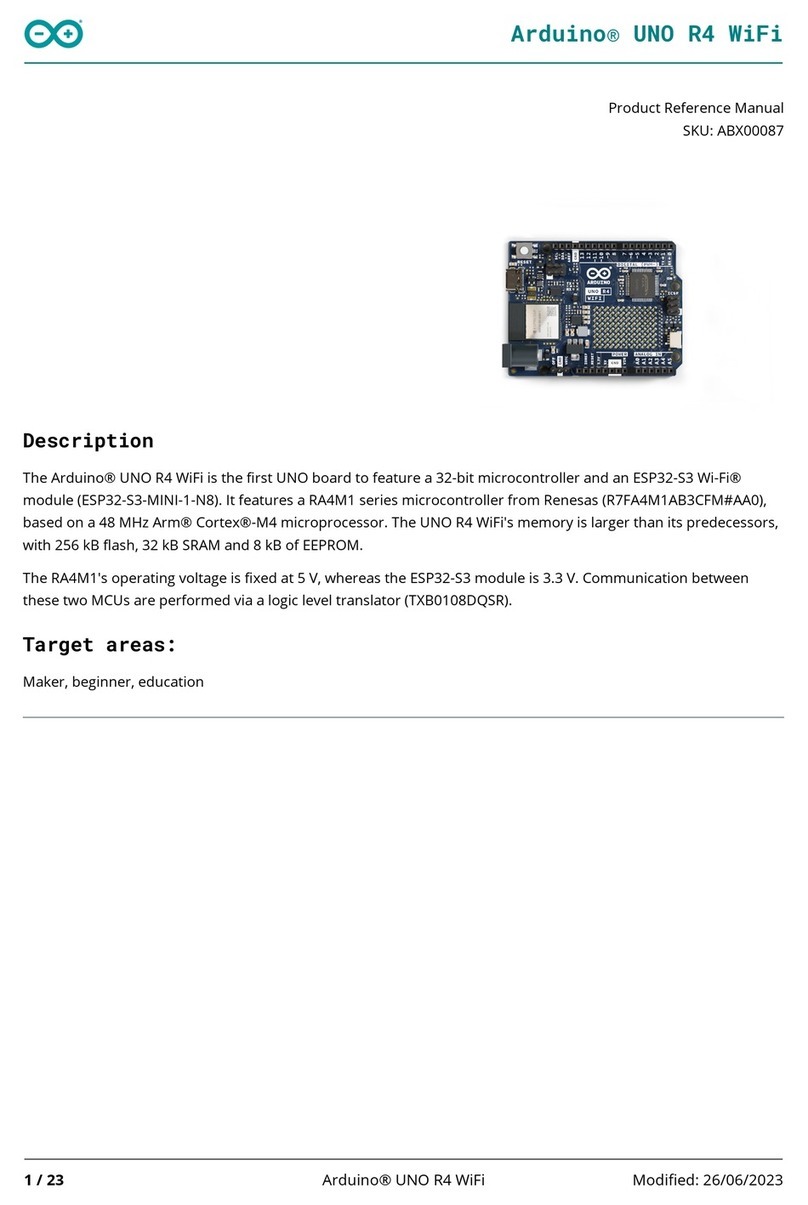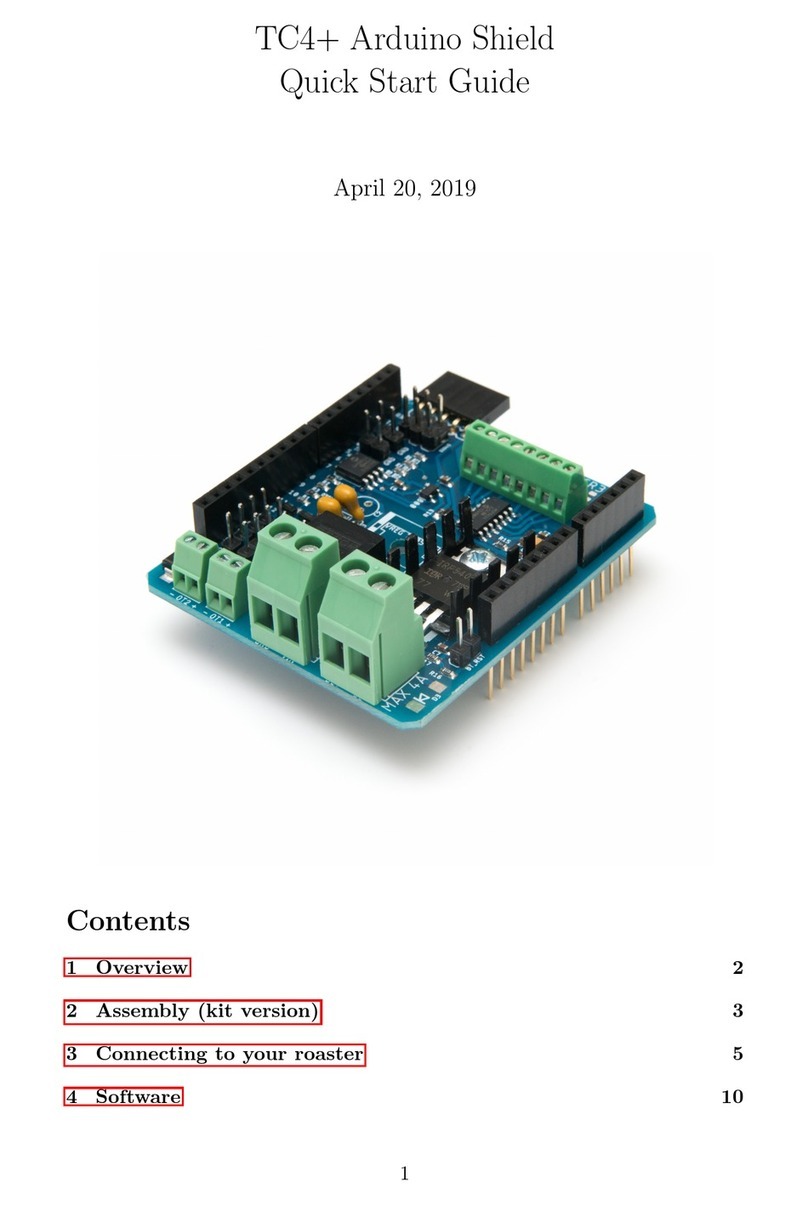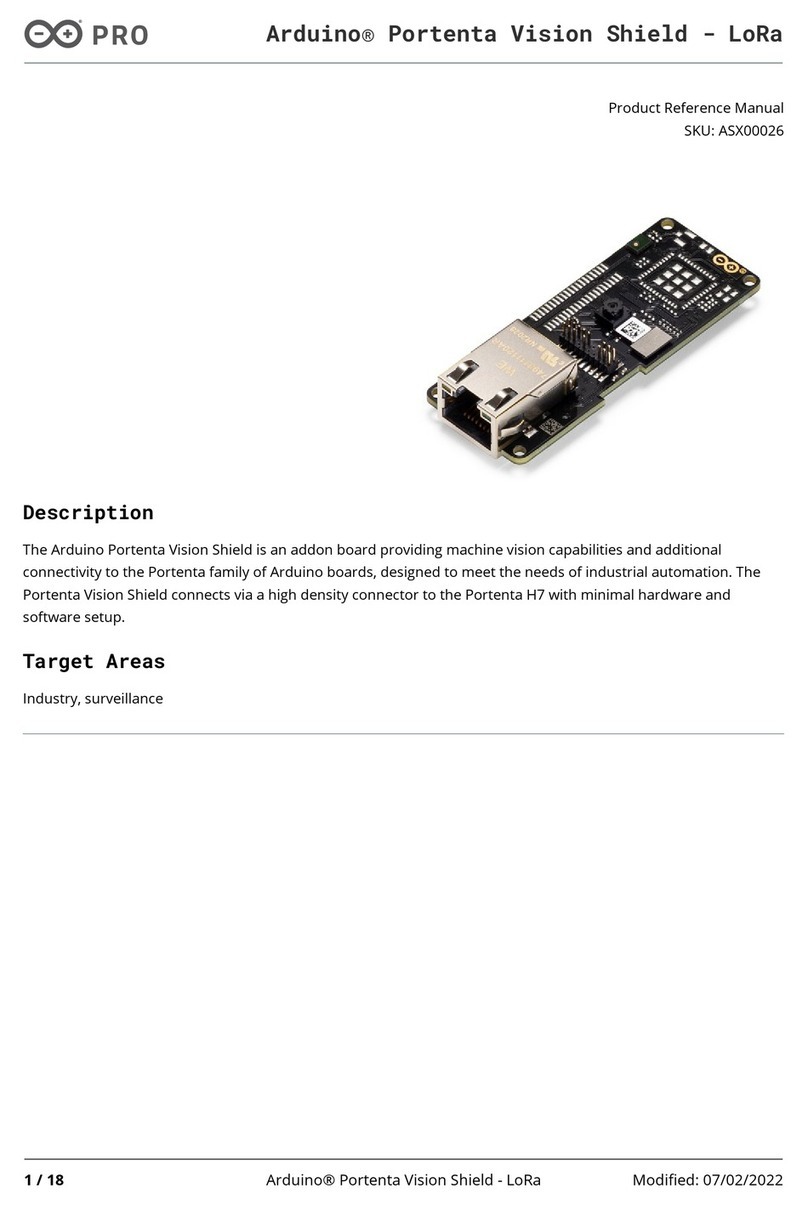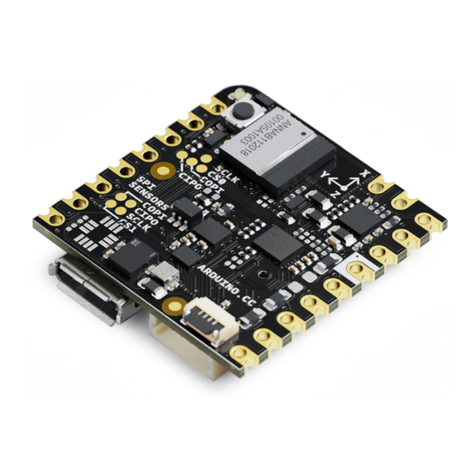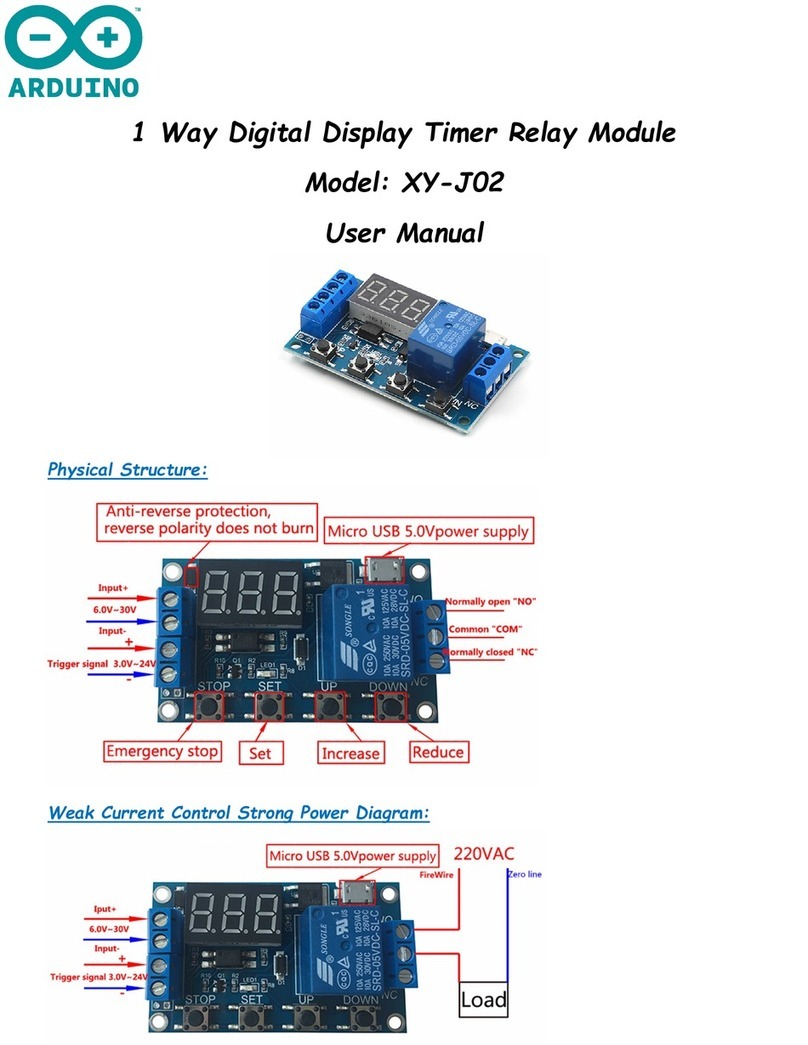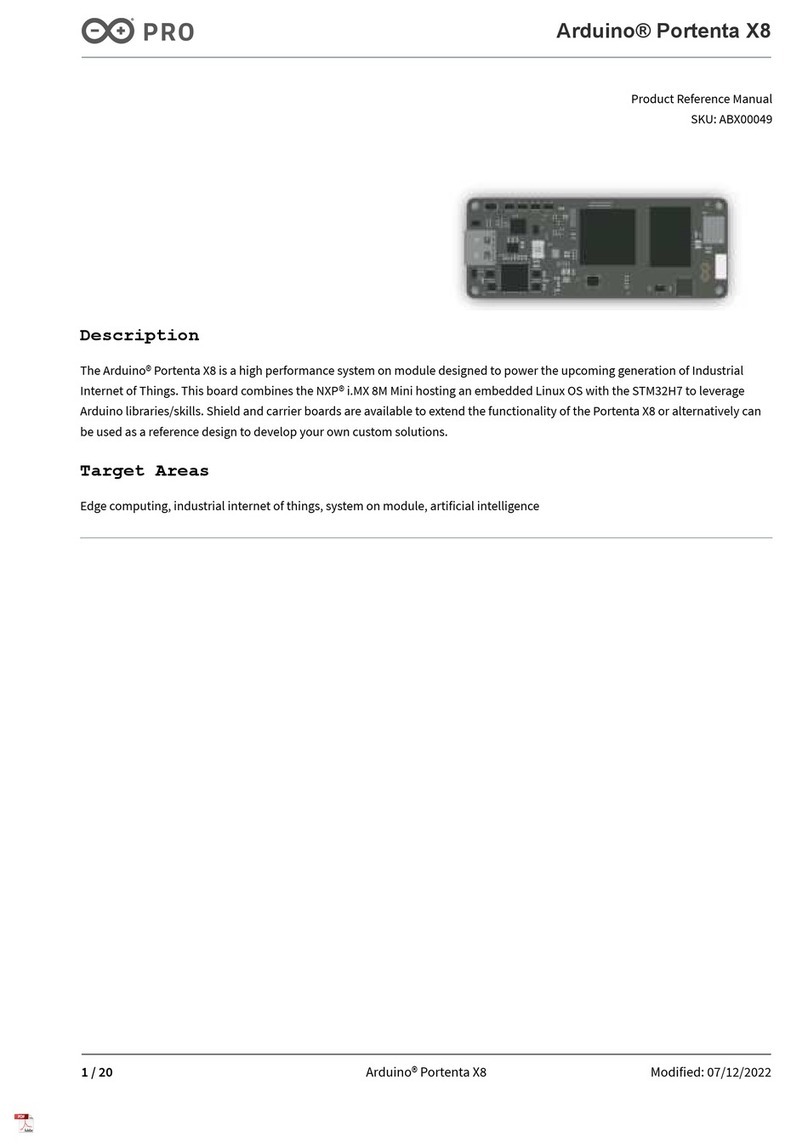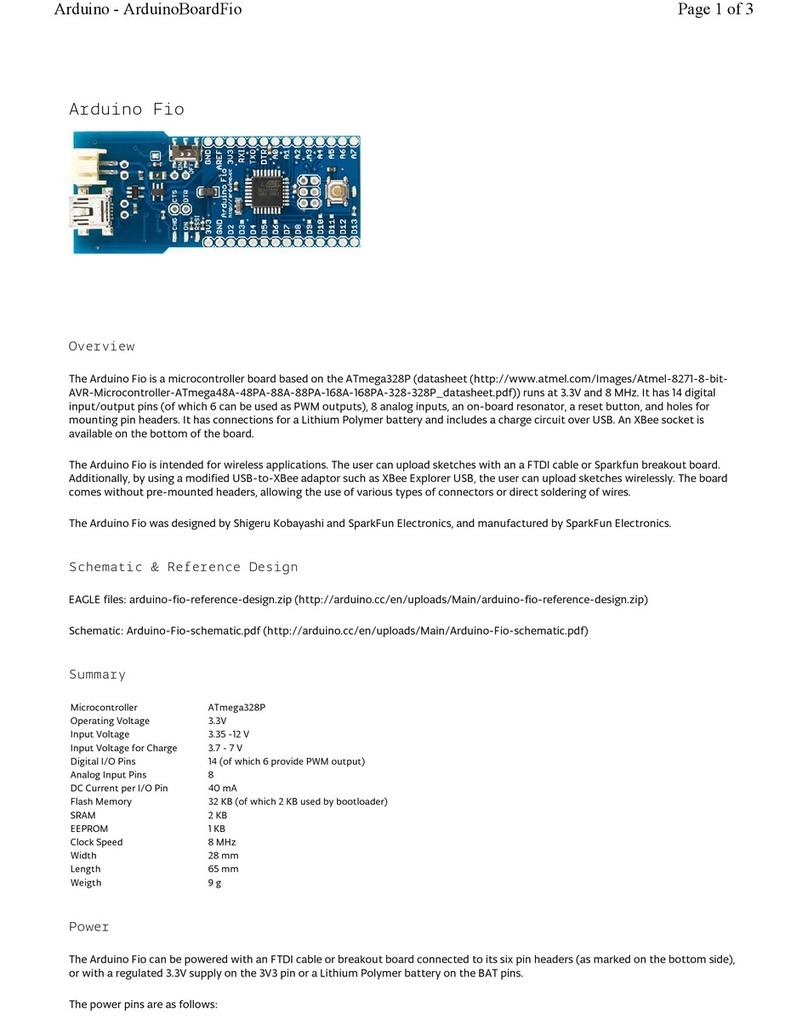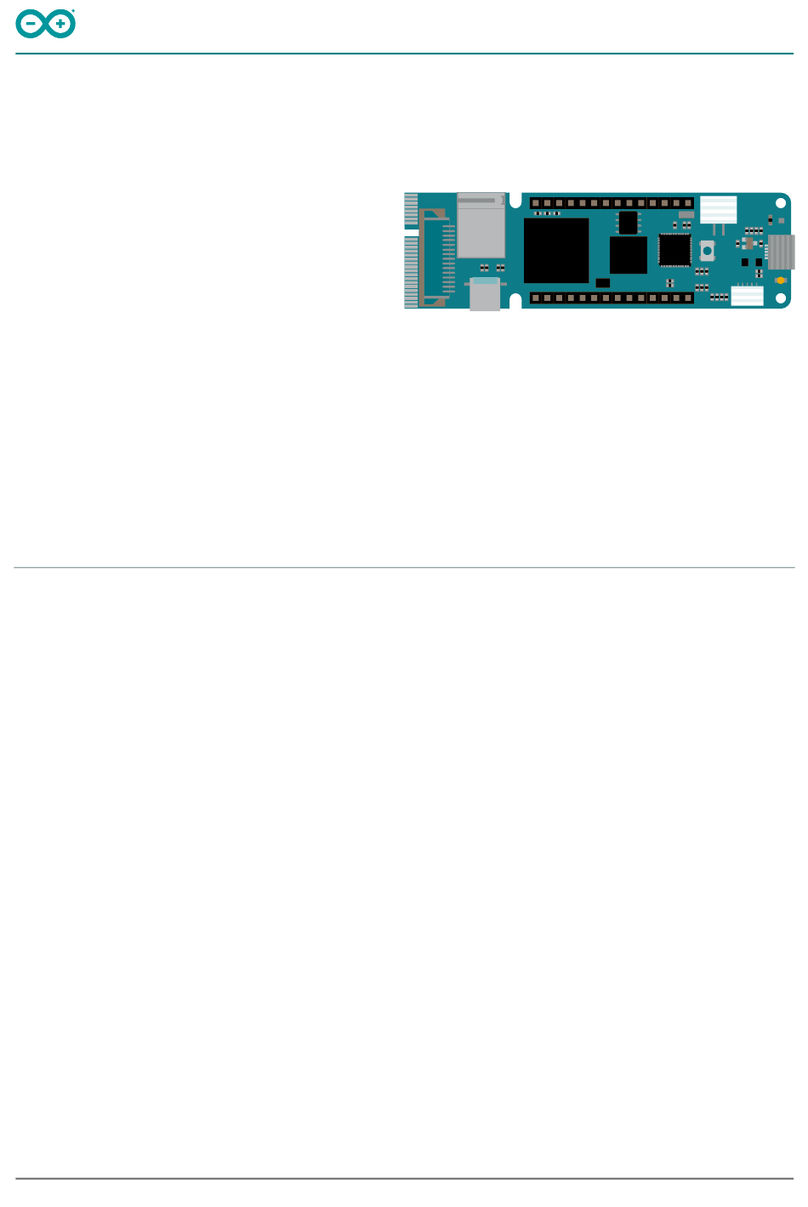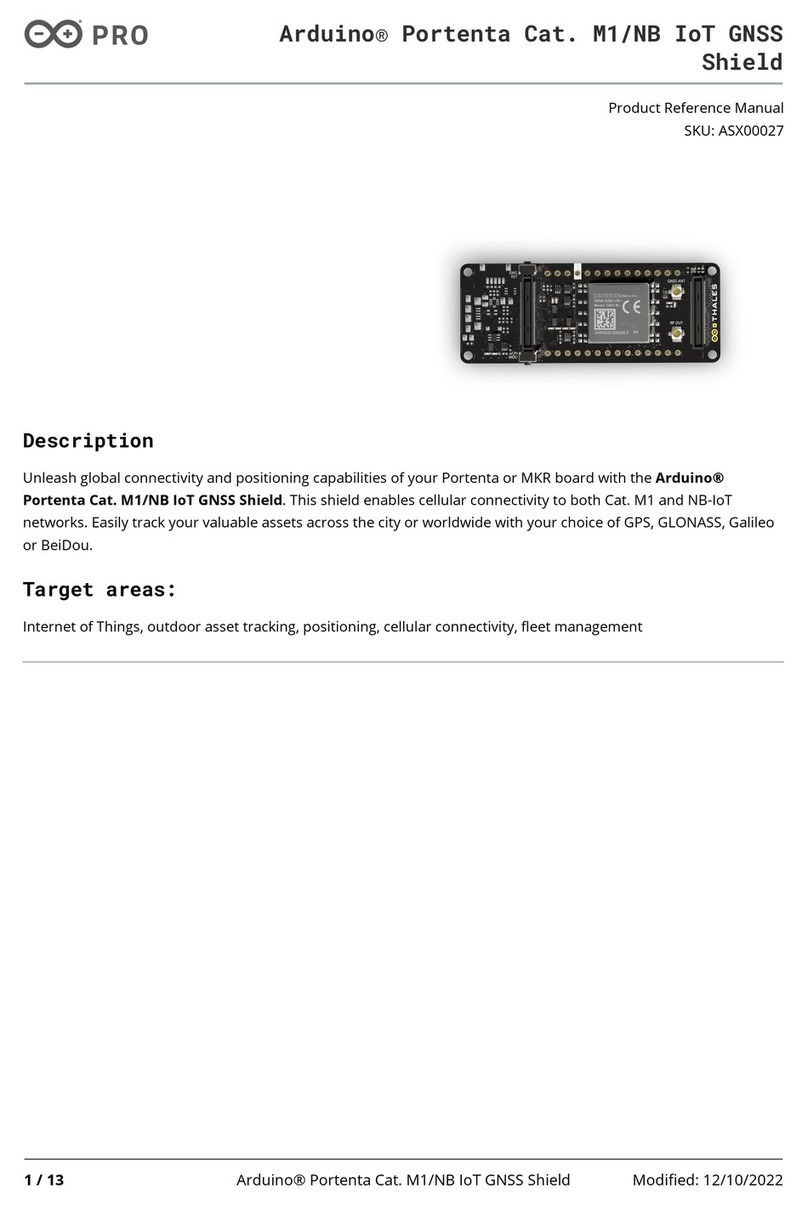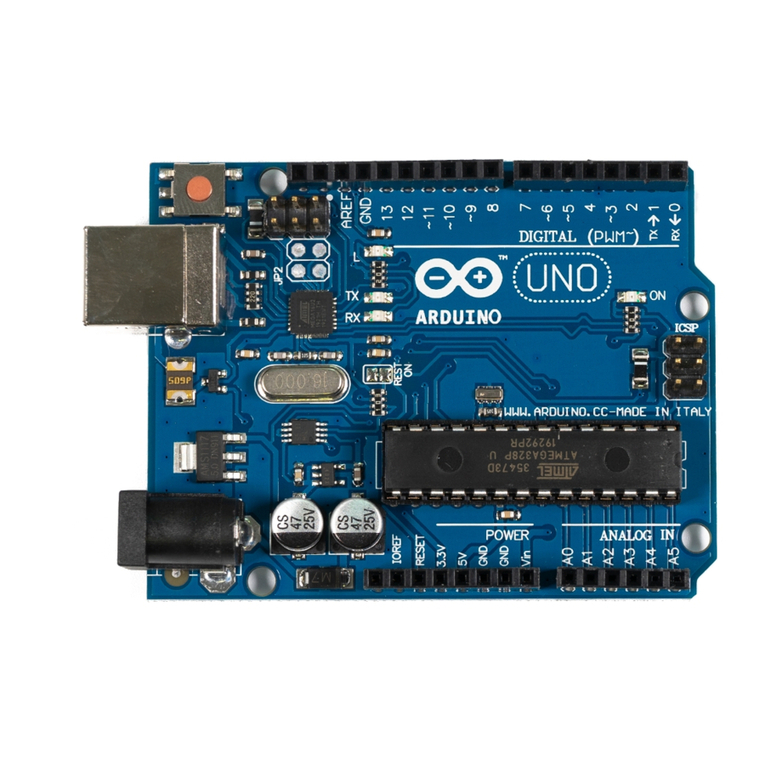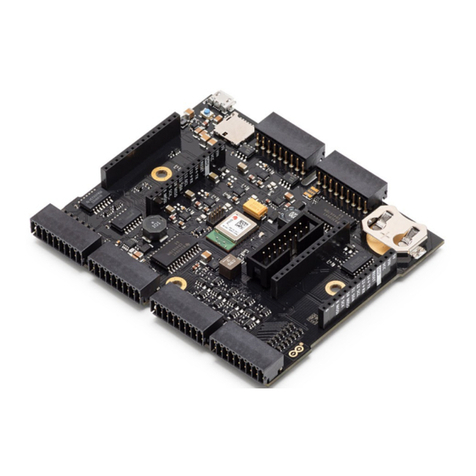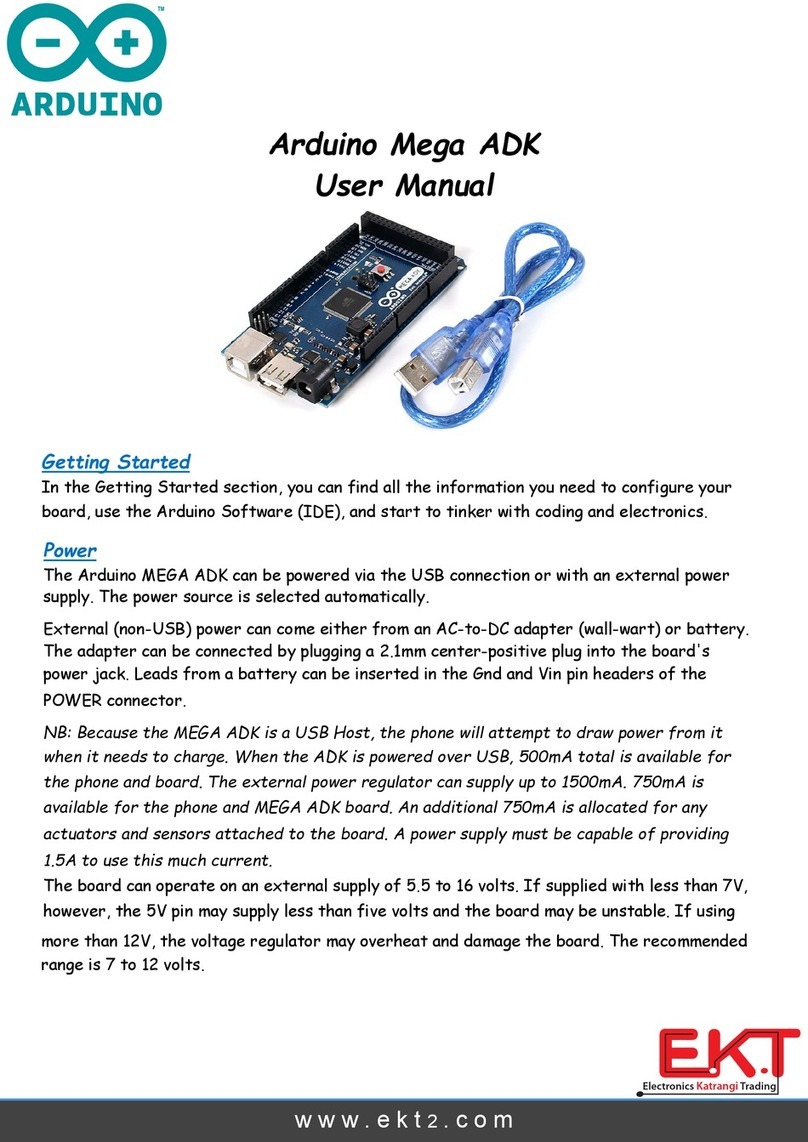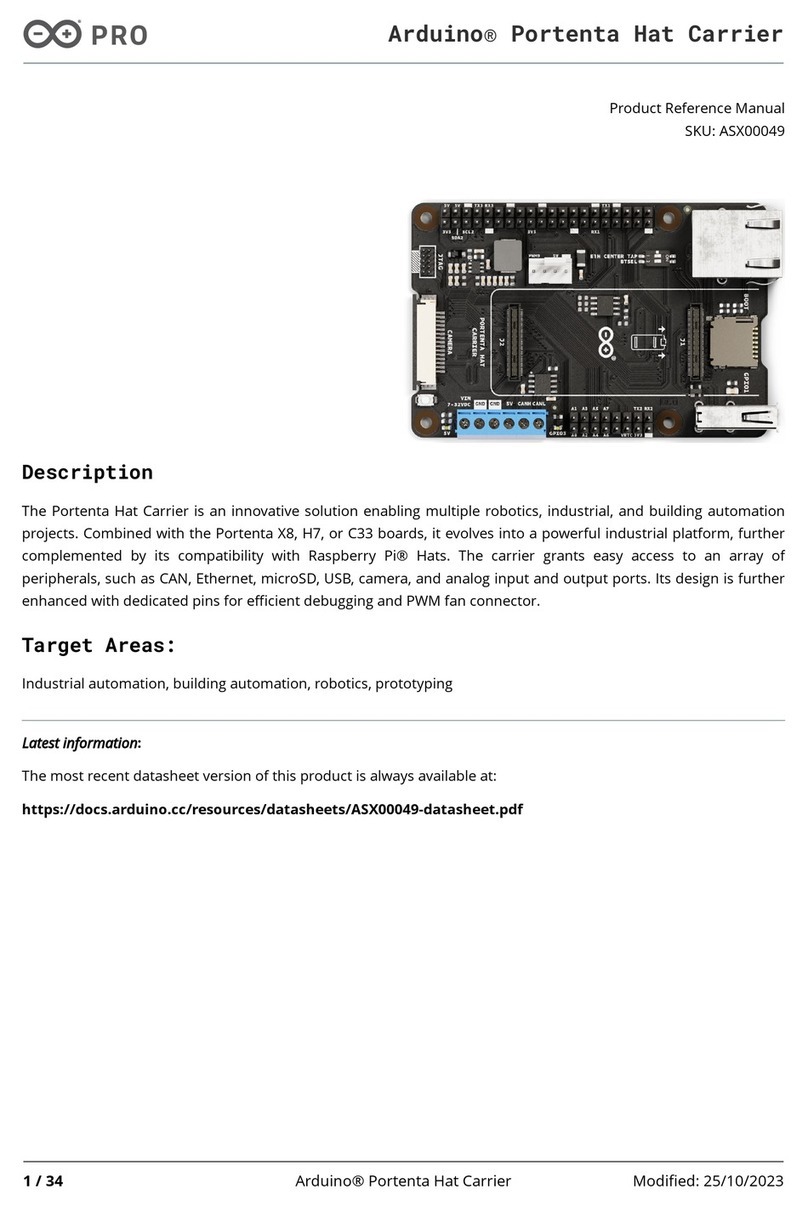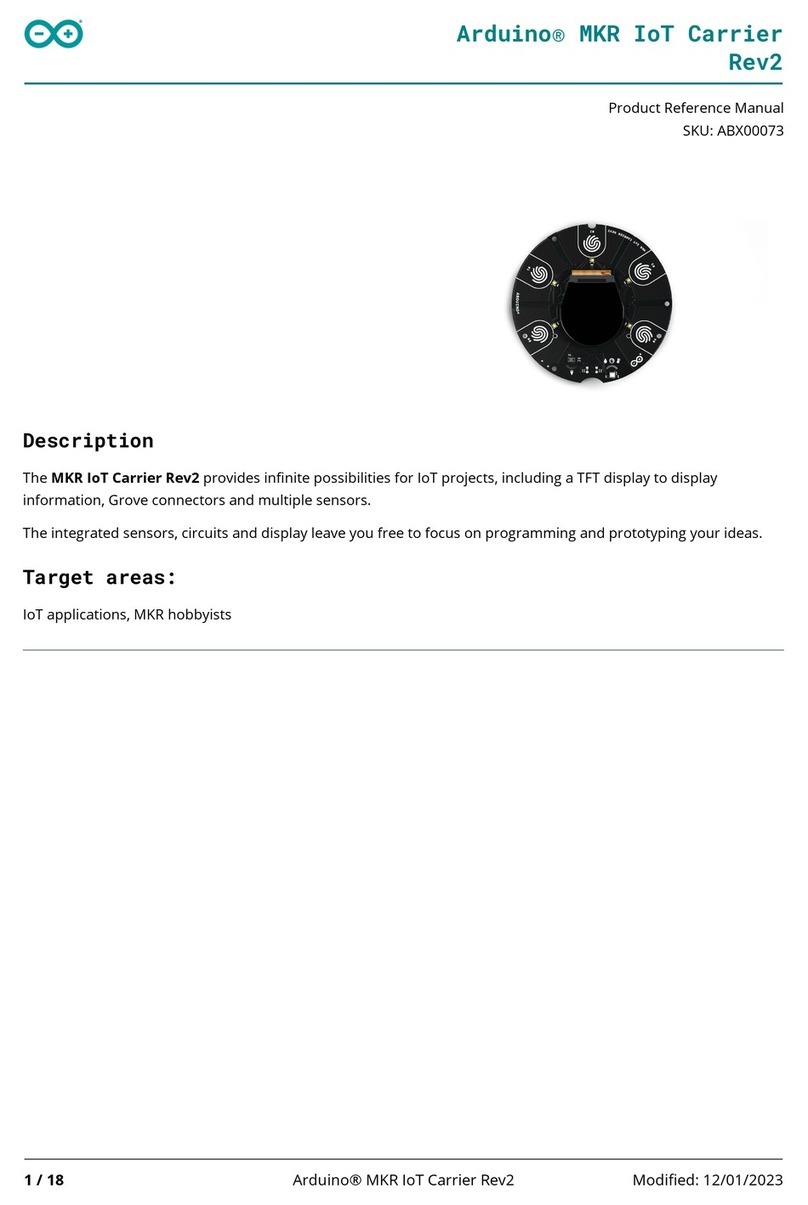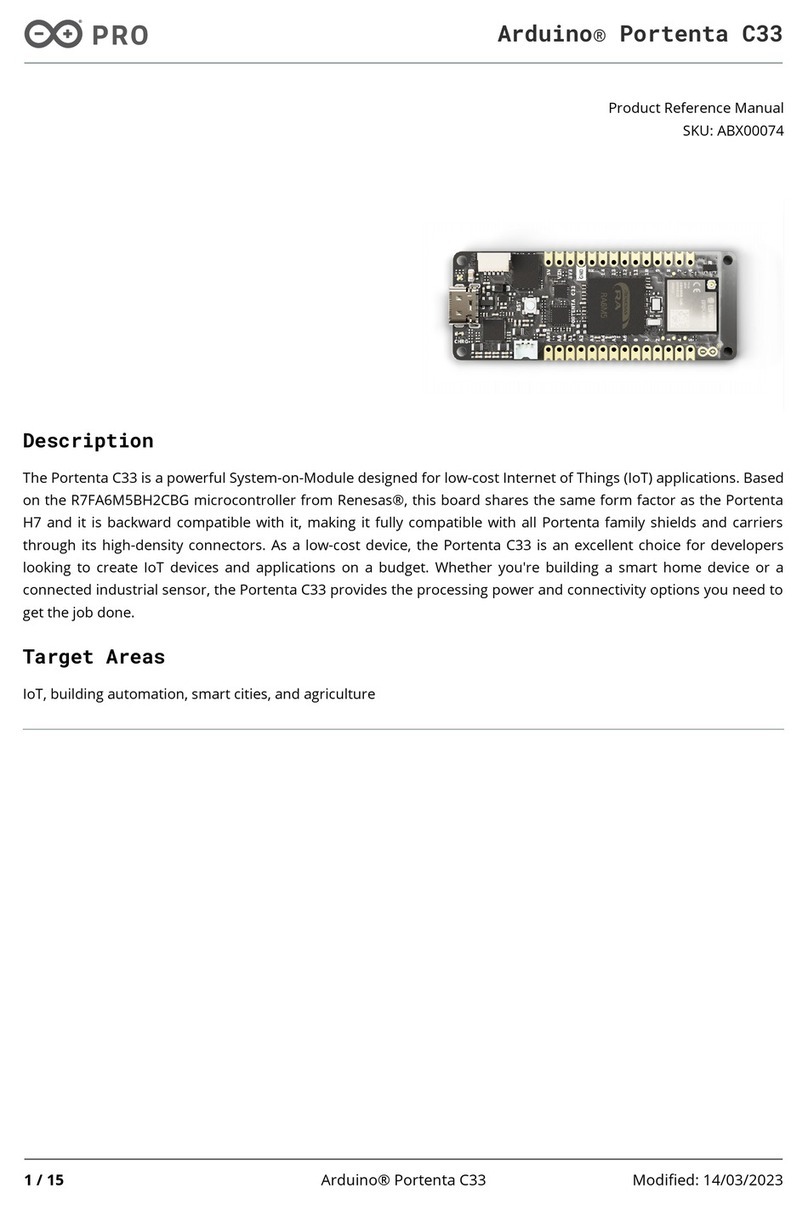Motor Driver Shield for Arduino Uno and Arduino Mega2650
(MOT-L298P) Manual
DESCRIPTION
L298 2Amp Motor Driver Shield for Arduino is based on L298 motor driver integrated circuit, a full- bridge
motor driver. It can drive two separate 2A DC motors or 1 2A step motor. Motor's velocity and directions
can be controlled separately and there are 6 connectors connected to Arduino analogue pins. This motor
driver shield with PWM speed control mode and the PLL mode, using a jumper to switch. This also has a
Bluetooth interface where you can directly attach Bluetooth module to the shield.
KEY FEATURES OF L298P MOTOR DRIVER SHIELD
•Drive 2 DC motors at 4.8-24V at up to 2A peak (2.5A peak) current.
•Built-in Schottky diodes to protect against motor back EMF.
•Drive 1 servo motor with a dedicated 5V regulated power.
•Built-in buzzer.
•Remote reset switch.
•Bluetooth connector (x2).
•Ultrasonic Range Finder Ping connector.
•RGB LED connector
•6 Analog/digital pins brought out to 3-pin headers with 5V and Gnd available for each input for
easy sensor hookup.
•Stacking female connectors for supporting another daughter card.
•Can optionally power have attached Arduino off the shield.
LOGIC POWER SUBSYSTEM
The Arduino 5V is brought up to the shield and is available on the 6 sets of red sensors 5V pins, the yellow
Ping connector for Ultrasonic Rangefinders and the 2 blue digital connectors. It is also used to power the
logic portion of the L298P chip. This ensures that they have good clean 5V power independent of what the
motors are doing. The Arduino 3.3V is brought up to the shield and is available on the 2 Bluetooth
connectors. The Arduino can be powered separately using the normal USB or DC power connector or it
can also be powered from the Shield. To select this, there is a jumper near the electrolytic cap
labeled ‘OPT’. When this jumper is removed, the Arduino must be powered separately. When the jumper
is installed, the power from the motor VMS power connector is connected to the Vin pin on the Arduino
which feeds the Arduino on-board 5V regulator. To use this option, the motor power input must be at least
6.5V to feed the regulator. If powering the Arduino off the shield, the DC power jack on the Arduino
should not be used to avoid a power conflict, but the USB can be used.
Motor Power Subsystem The motor power comes in on the 2-pos screw terminal. The VMS is the positive
motor voltage which can range from 4.8 to 24V. If you are using this input to power the Arduino by
installing the ‘OPT’ jumper, the maximum input voltage on this terminal should be limited to 12V to avoid
overheating the Arduino regulator.
•1 x 2 Screw Terminal (Motor Power)
•VMS = Motor Vcc which must be between 4.8 and 24V.
•GND = Motor Ground
